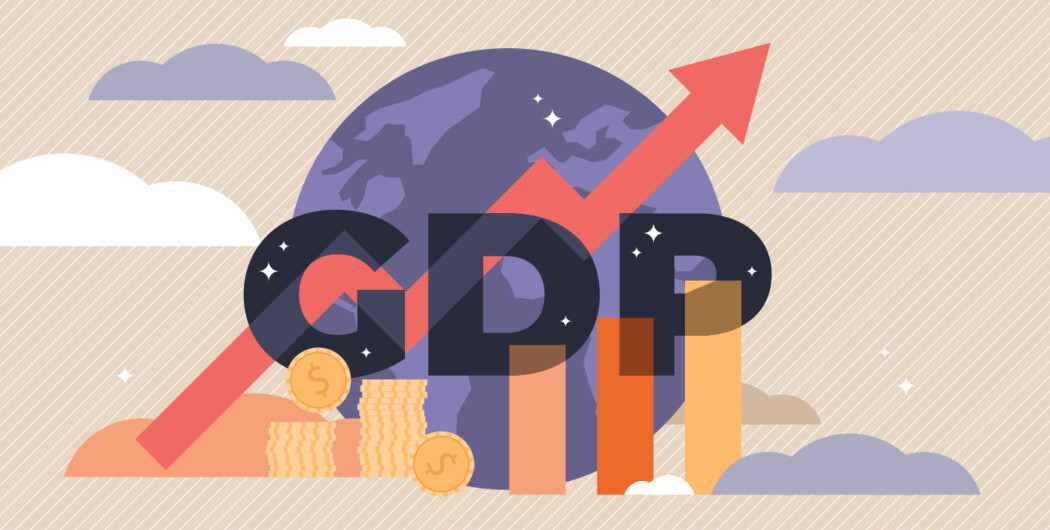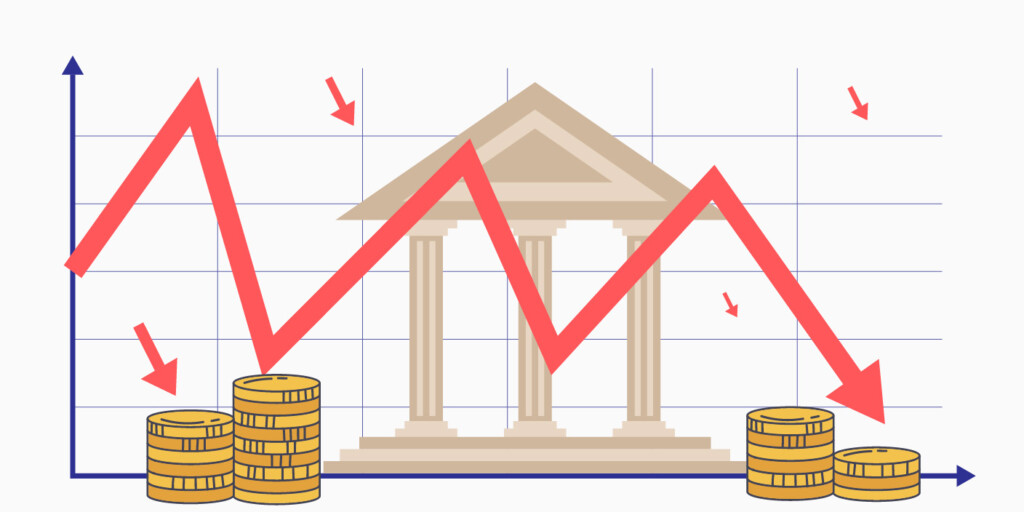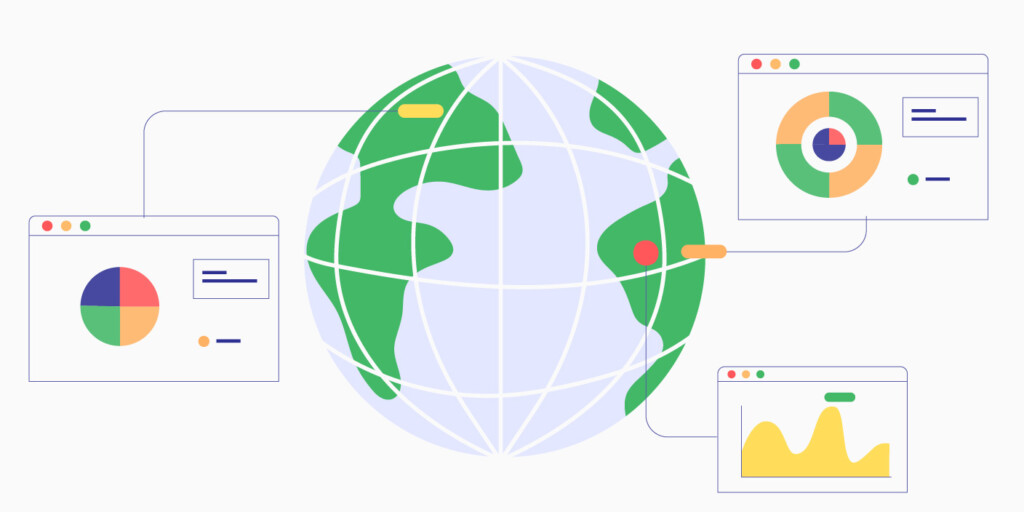

Gross domestic product (GDP) is the total monetary or market value of all the finished goods and services produced within a country’s borders in a specific time period. GDP is composed of goods and services produced for sale in the market and also includes some nonmarket production, such as defense or education services provided by the government.
Data are released annually and quarterly.
Gross domestic product is a very important data as it directly affects other macroeconomic data (interest rate decisions, inflation…).
GDP Purchasing Power Parity (PPP)
While not directly a measure of GDP, economists look at PPP to see how one country’s GDP measures up in international dollars using a method that adjusts for differences in local prices and costs of living to make cross-country comparisons of real output, real income, and living standards.
Types of Gross Domestic Product

1. Nominal GDP
Nominal GDP is an assessment of economic output in an economy that includes current prices in its calculation. In other words, inflation or price increase rate that may increase the growth figure is not excluded from the calculation. All goods and services counted in the nominal GDP are valued at the prices at which these goods and services were actually sold during that year.
Nominal GDP is evaluated in either the local currency or U.S. dollars at currency market exchange rates to compare countries’ GDPs in purely financial terms.
Nominal GDP is used when comparing different quarters of output within the same year. When comparing the GDP of two or more years, real GDP is used. This is because, in effect, the removal of the influence of inflation allows the comparison of the different years to focus solely on volume.
2. Real GDP
Real GDP is an inflation-adjusted measure that reflects the number of goods and services produced by an economy in a given year, in which prices are held constant from year to year to separate the effect of inflation or deflation from the trend in output over time.
Rising prices tend to increase a country’s GDP, but this need not reflect any change in the quantity or quality of goods and services produced.
For example, suppose that 10 cars are produced in an economy in 1 year and the value of each of these cars is 100,000 USD, in this case GDP would be 1,000,000 USD. If the total number of cars produced does not change in the next year, but the car price rises to 110,000 USD, it can be said that the economy has grown by 10% in nominal terms, but there will be no real growth.
GDP Growth Rate: The GDP growth rate compares the year-over-year (or quarterly) change in a country’s economic output to measure how fast an economy is growing. Usually expressed as a percentage rate, this measure is popular for economic policymakers because GDP growth is thought to be closely connected to key policy targets such as inflation and unemployment rates.
Does GDP affect inflation?

A high GDP data can be expected to cause an increase in inflation. Because, in periods of increased economic welfare, low unemployment, wage increase and increased labor demand will occur to the growing economy. These factors lead to an increase in the purchasing power of people. This leads to increased demand for goods and services. As a result, inflation rises.
When inflation rises, people spend more money because the monetary value decreases. This causes a further increase in GDP in the short run.
Establishing the delicate balance between inflation and GDP growth is essential for a stable economic environment.

How is GDP calculated?
GDP is generally determined by three basic methods.
1. Spending approach
Spending approach is the most used approach. The expenditure approach calculates the expenditures of different groups participating in the economy. This approximation is found using the following formula:
GDP=C+G+I+NX (X-M)
C: Consumer spending
G: Government spending
I: Investment
NX: Net Export
All of these activities contribute to the GDP of a country. Consumers spend money to acquire goods and services, such as groceries and haircuts. Consumer spending is the biggest component of GDP, accounting for more than two-thirds of the U.S. GDP.
2. Production (output) approach
The production approach is essentially the opposite of the expenditure approach. The production approach measures the total value of economic output, rather than measuring the costs of inputs that contribute to economic activities. However, the cost of intermediate goods (such as materials and services) consumed in the process is not included in the calculation, instead the added value created is included in the calculation.
GDP = P x Q
P: Goods and services price
Q: Quantity of the good or service
3. Income approach
The income approach is a GDP calculation method that measures the incomes generated by factors of production while producing final goods and services.
Here, wages, rent, profit and interest income earned from the factors of production listed as labor, land, capital, entrepreneurship are collected. In other words, the calculation of GDP with the income approach is found by adding the incomes obtained as a result of economic activities in an economy. In addition, depreciation, a reserve that businesses set aside to account for the replacement of equipment that tends to wear out with use, is added to national income. All of these combined make up a nation’s income.
In summary, the following formula is used in the income approach:
GDP = W + P + I + R + D + IT – S
W: Wage
P: Profit
I: Interest
R: Rant
D: Depreciation
IT: Indirect Taxes
S: Subsidies
Which country has the highest GDP?

The countries with the two highest GDPs in the world are the United States and China. However, their ranking differs depending on how you measure GDP. Using nominal GDP, the United States comes in first with a GDP of $23.32 trillion as of 2021, compared to $17.73 trillion in China.
But many economists argue that it is more accurate to instead use purchasing power parity GDP as a measure of national wealth. By this metric, China is actually the world leader with a 2021 PPP GDP of $27.31 trillion, followed by $23 trillion in the United States. (The World Bank)
How does GDP data affect markets?
Since it is thought that the total output of the companies will increase during the periods when the economy is expected to grow, the stock markets are positively affected by this.
However, the impact of GDP on the market is generally limited. Because these data are retrospective data. That is, there is a significant time difference between the period when data are released and the time when growth occurs. This causes the effect to be limited.
However, if actual figures differ significantly from expectations, GDP data can have an impact on the markets by creating new expectations.
Also, businesses can use GDP as a guide for their business strategy, as GDP provides a direct indicator of the health and growth of the economy.
Not only businesses, but also central banks use the growth rate and other GDP statistics as part of their decision-making processes when determining what kind of monetary policy to implement. Here, an expansionary monetary policy can be applied to stimulate the economy if the growth rate is slowing, while monetary policy tools can be used to slow down the economy to prevent inflation if the growth rate is strong.
Global sources for country GDP data
The World Bank hosts one of the most reliable web-based databases. It has one of the best and most comprehensive lists of countries for which it tracks GDP data. The International Money Fund (IMF) also provides GDP data through its multiple databases, such as World Economic Outlook and International Financial Statistics.
Another highly reliable source of GDP data is the Organization for Economic Cooperation and Development (OECD). The OECD not only provides historical data but also forecasts GDP growth. The disadvantage of using the OECD database is that it tracks only OECD member countries and a few nonmember countries.








